This article was co-authored by Alina Lane, DDS and by wikiHow staff writer, Hannah Madden. Dr. Alina Lane is a Dentist who runs All Smiles Dentistry, a general practice dental office based in New York City. After completing a DDS at the University of Maryland, Dr. Lane completed a year-long clerkship in Implantology at the University of Maryland, where she focused on the advanced restoration of dental implants. She continued her advanced education by completing a General Practice Residency at Woodhull Medical Center, an affiliate of the NYU School of Medicine. She received the Woodhull Medical Center Resident of the Year 2012-2013.
There are 9 references cited in this article, which can be found at the bottom of the page.
wikiHow marks an article as reader-approved once it receives enough positive feedback. In this case, 80% of readers who voted found the article helpful, earning it our reader-approved status.
This article has been viewed 1,970,208 times.
If you’ve recently had a tooth removed, you might develop a dry socket, especially if you suck too hard on a straw or smoke tobacco products. This condition usually happens 2 to 3 days after the surgery, and the main symptom is intense pain. If you experience a dry socket, it’s important to call your dentist right away to make an appointment.[1] However, if you can't get to the dentist, there are a few things you can do at home to relieve your pain as the dry socket heals.
Steps
Pain Management
-
1Take pain relievers. Though pain medication will not help the wound heal or prevent infection, it will help you manage the pain associated with a dry socket. Your doctor may recommend a prescription-strength pain medication, or you may wish to stick with over-the-counter medications like aspirin or acetaminophen.[2]
- Do NOT give aspirin to children or adolescents. Use of aspirin in children or teenagers may cause complications with the liver and brain. Consult with your child's pediatrician for guidance on what medication would work best for your child.[3]
- Don’t exceed the dosage with ibuprofen either because this can lead to severe stomach or intestinal bleeding.[4]
-
2Use ice or a cold compress on the side of your face experiencing pain. Fill a sandwich bag with ice cubes then wrap it in a clean towel. In a pinch, you can also use a bag of frozen vegetables wrapped in a paper towel. Press the compress against your face to soothe pain and inflammation.[5]
- Keep the ice pack on for 20 minutes, then off for 20 minutes.
- After 2 days, switch to using a warm compress, as a cold compress will no longer reduce swelling or inflammation after the first 48 hours.
Advertisement -
3Use a salt water rinse. Add approximately 1/2 tsp (2.8 g) of salt to 1 c (240 mL) of warm water. Then, very gently swish the salt water around in your mouth, focusing on the affected side of your mouth.[6] This will remove debris and help soothe inflammation.[7]
- Repeat after each meal and before bed.
-
4Avoid using tobacco products. The physical act of smoking a cigarette may cause a blood clot to come dislodged, and using chewing tobacco or passing smoke over the socket may further irritate the wound and prolong the pain and inflammation. Try using a nicotine patch if you don't believe you can't quit smoking during the time it takes for your mouth to recover.[8]
-
5
Professional Treatment
-
1Go to the dentist. If you're experiencing the symptoms of a dry socket, you should see the dentist who performed your extraction. They can rinse the socket and give you an ointment that will help it heal properly. If you aren't able to see the dentist, the dry socket will heal on its own, but it may take longer and be more painful.[11]
- If the dry socket gets infected, you might also need antibiotics. Your dentist can let you know whether or not that’s necessary.[12]
-
2Flush the socket. Fill a clean, plastic syringe with a curved tip with water or salt water. Place the syringe in your mouth and slowly expel water, moving the syringe around to flush the socket from multiple angles. Be sure that any visible debris is completely removed.[13]
- Continue to flush after every meal and before bed until the wound begins to heal and debris no longer pools in the socket.[14]
-
3Pack with medicated dressings. The oral surgeon or dentist who performed your tooth extraction may pack the wound with medicated dressings. The medication applied to these dressings can help relieve pain and prevent infection. You will most likely have to change the dressings every day, but your oral surgeon will determine the frequency and duration of medicated dressing applications.[15]
- If you’d like to try medical dressings, you’ll have to visit your dentist.
Prevention
-
1Have your oral surgeon pack the wound immediately after surgery. This has been shown to reduce the incidence of developing a dry socket. Having the wound sutured by your oral surgeon may also prevent a dry socket.[16]
-
2Use antibacterial mouthwash. Do this right before and after surgery for best results. Unscrew the cap and pour mouthwash into the cap. Dilute it with water so that it is 50% water and 50% mouthwash. Gently swish the mouthwash around in your mouth moving your tongue from one cheek to another. You may wish to concentrate your swishing efforts around the affected area. Then, spit the mouthwash into the sink.[17]
- Rinse your mouth out with water immediately afterward if the sting of mouthwash becomes too intense.
-
3Stick to soft foods. This is especially important during the first 24 hours after surgery. Gradually move from soft foods to semi-soft foods as your wound heals, but it's generally best to avoid hard, chewy, crunchy, and spicy foods, as these are most prone to pooling in the socket and causing irritation or infection.[18]
- Yogurt and applesauce are great choices as you recover.
- When you eat, avoid chewing on the side of your mouth that you had surgery on.
Foods to Eat and Avoid to Prevent a Dry Socket
Expert Q&A
-
QuestionCan a dry socket develop under sutures?
 Cristian Macau, DDSDr. Macau is an oral surgeon, periodontist, and aesthetician at Favero Dental Clinic in London. He received his DDS from Carol Davila University of Medicine in 2015.
Cristian Macau, DDSDr. Macau is an oral surgeon, periodontist, and aesthetician at Favero Dental Clinic in London. He received his DDS from Carol Davila University of Medicine in 2015.
Doctor of Dental Surgery In some cases yes. Dry sockets usually occur after complicated extractions when forces have compressed the socket walls reducing the bleeding. Another case is when patients do not respect the indications given by their dentist.
In some cases yes. Dry sockets usually occur after complicated extractions when forces have compressed the socket walls reducing the bleeding. Another case is when patients do not respect the indications given by their dentist. -
QuestionHow long should I be in discomfort before suspecting I have dry socket?
 Cristian Macau, DDSDr. Macau is an oral surgeon, periodontist, and aesthetician at Favero Dental Clinic in London. He received his DDS from Carol Davila University of Medicine in 2015.
Cristian Macau, DDSDr. Macau is an oral surgeon, periodontist, and aesthetician at Favero Dental Clinic in London. He received his DDS from Carol Davila University of Medicine in 2015.
Doctor of Dental Surgery Dry socket usually starts after 2 days, so the first day after extraction seems normal. The pain increases in a short period of time (a few hours) and gets continuous and very intense. You will start taking medication and realize that it still hurts. Contact your oral surgeon as fast as you can to schedule an appointment.
Dry socket usually starts after 2 days, so the first day after extraction seems normal. The pain increases in a short period of time (a few hours) and gets continuous and very intense. You will start taking medication and realize that it still hurts. Contact your oral surgeon as fast as you can to schedule an appointment. -
QuestionIf I have dry socket, how can I treat it myself?
 Alina Lane, DDSDr. Alina Lane is a Dentist who runs All Smiles Dentistry, a general practice dental office based in New York City. After completing a DDS at the University of Maryland, Dr. Lane completed a year-long clerkship in Implantology at the University of Maryland, where she focused on the advanced restoration of dental implants. She continued her advanced education by completing a General Practice Residency at Woodhull Medical Center, an affiliate of the NYU School of Medicine. She received the Woodhull Medical Center Resident of the Year 2012-2013.
Alina Lane, DDSDr. Alina Lane is a Dentist who runs All Smiles Dentistry, a general practice dental office based in New York City. After completing a DDS at the University of Maryland, Dr. Lane completed a year-long clerkship in Implantology at the University of Maryland, where she focused on the advanced restoration of dental implants. She continued her advanced education by completing a General Practice Residency at Woodhull Medical Center, an affiliate of the NYU School of Medicine. She received the Woodhull Medical Center Resident of the Year 2012-2013.
Board Certified Dentist With dry socket, you'll generally notice an increase in pain. It's always a good idea to see the dentist that performed the extraction if you are having dry socket symptoms because they'll typically clean out the socket and then use an ointment or medication to allow the area to heal properly. If you aren't able to see a dentist, try a saltwater rinse, but keep in mind it may take a little longer for your mouth to heal.
With dry socket, you'll generally notice an increase in pain. It's always a good idea to see the dentist that performed the extraction if you are having dry socket symptoms because they'll typically clean out the socket and then use an ointment or medication to allow the area to heal properly. If you aren't able to see a dentist, try a saltwater rinse, but keep in mind it may take a little longer for your mouth to heal.
Warnings
- If you think you have a dry socket, call your dentist right away.[19]⧼thumbs_response⧽
References
- ↑ Alina Lane, DDS. Board Certified Dentist. Expert Interview. 21 April 2020.
- ↑ http://www.mayoclinic.org/diseases-conditions/dry-socket/basics/treatment/con-20025990
- ↑ http://www.mayoclinic.org/diseases-conditions/reyes-syndrome/basics/definition/con-20020083
- ↑ https://www.mayoclinic.org/drugs-supplements/ibuprofen-oral-route/proper-use/drg-20070602
- ↑ https://my.clevelandclinic.org/health/diseases/17731-dry-socket
- ↑ https://www.mayoclinic.org/drugs-supplements/ibuprofen-oral-route/proper-use/drg-20070602
- ↑ Alina Lane, DDS. Board Certified Dentist. Expert Interview. 21 April 2020.
- ↑ https://my.clevelandclinic.org/health/diseases/17731-dry-socket
- ↑ https://www.mayoclinic.org/diseases-conditions/dry-socket/diagnosis-treatment/drc-20354382
- ↑ https://www.cdc.gov/healthyweight/healthy_eating/water-and-healthier-drinks.html
- ↑ Alina Lane, DDS. Board Certified Dentist. Expert Interview. 21 April 2020.
- ↑ https://medlineplus.gov/ency/patientinstructions/000780.htm
- ↑ https://www.mayoclinic.org/diseases-conditions/dry-socket/diagnosis-treatment/drc-20354382
- ↑ http://www.mayoclinic.org/diseases-conditions/dry-socket/basics/treatment/con-20025990
- ↑ http://www.mayoclinic.org/diseases-conditions/dry-socket/basics/treatment/con-20025990
- ↑ https://www.mayoclinic.org/diseases-conditions/dry-socket/diagnosis-treatment/drc-20354382
- ↑ https://www.mayoclinic.org/diseases-conditions/dry-socket/symptoms-causes/syc-20354376
- ↑ https://www.mayoclinic.org/diseases-conditions/dry-socket/symptoms-causes/syc-20354376
- ↑ https://medlineplus.gov/ency/patientinstructions/000780.htm
About This Article
To treat a dry socket, flush the area using a syringe filled with clean salt water or alcohol-free diluted mouthwash after every meal and before bed. Additionally, use ice or a cold compress on the side of your face for 20 minutes at a time to ease the pain. You can also take pain relievers such as aspirin or acetaminophen to manage the pain. In order to stay hydrated and to keep your mouth moist, drink clear liquids, like room-temperature water. To learn how to prevent dry sockets, keep reading!

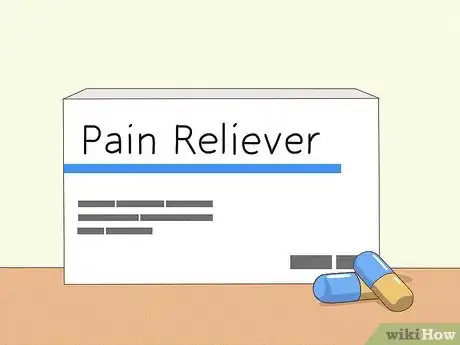

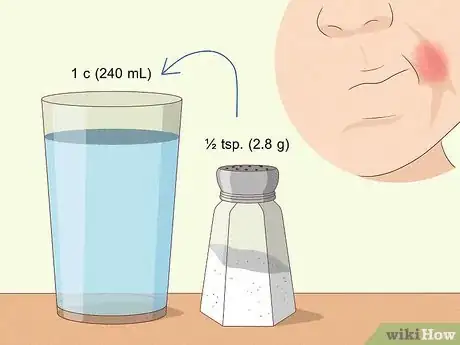
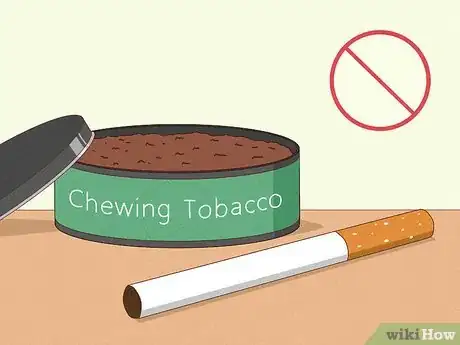
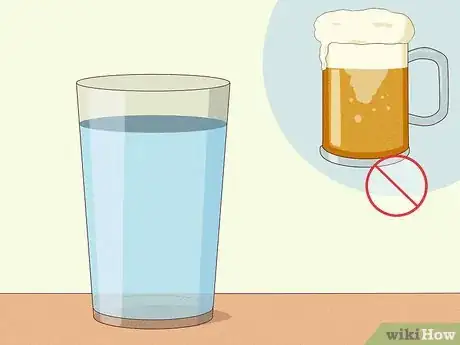
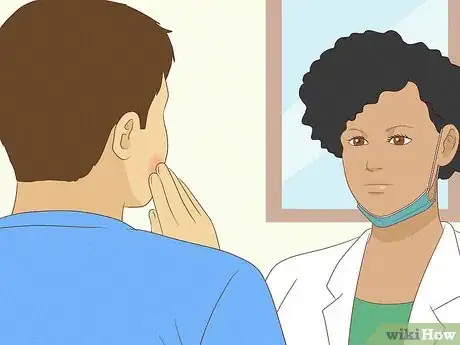

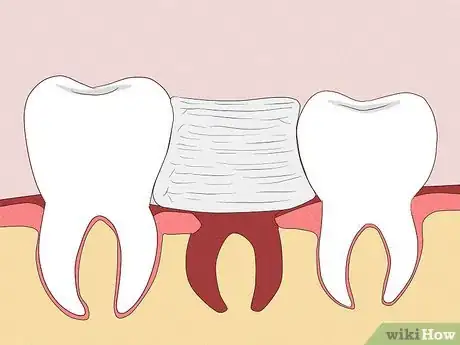

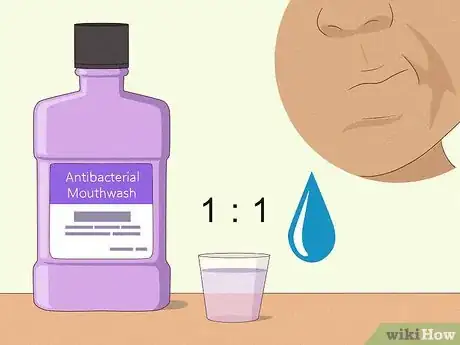


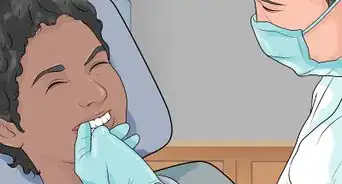

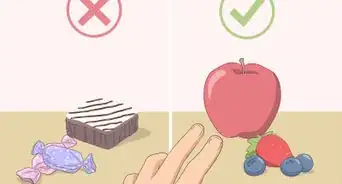

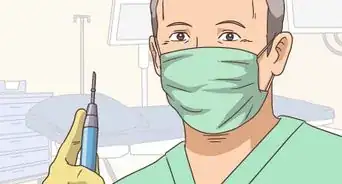


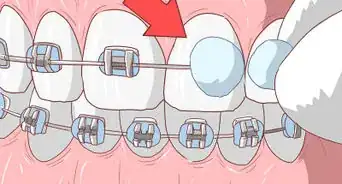
-Step-22.webp)

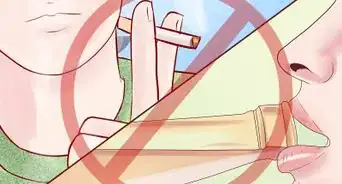















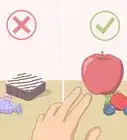





































Medical Disclaimer
The content of this article is not intended to be a substitute for professional medical advice, examination, diagnosis, or treatment. You should always contact your doctor or other qualified healthcare professional before starting, changing, or stopping any kind of health treatment.
Read More...